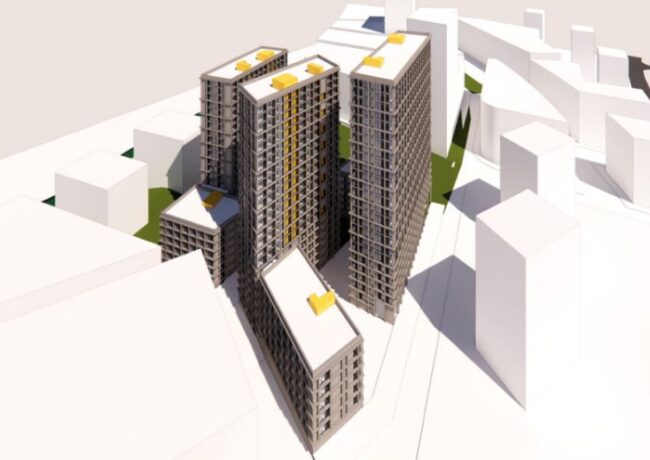Commentary
Masterplans must not become tick-box exercises
The past few years have seen a number of ambitious town centre renewal proposals brought forward in the North West, writes Seamus Lennon of TODD Architects.
While such schemes have often been difficult to get off the ground due to their hugely complex nature and the requirement for significant capital investment, there is now a set of business models emerging that have given the development community the confidence to work in partnership with local authorities to unlock delivery.
Often, they are spearheaded by the redevelopment and reinvention of a centrally located shopping centre or high street. We have been involved in a number of these projects in the North of England and throughout the UK, helping to drive councils’ ambitions for their town centres through the diversification of the shopping centre to include everything from residential to workplace, healthcare to education, as well as leisure and community uses.
As catalysts for regeneration it’s absolutely vital we get these right, but we must not lose sight of opportunities that can exist in peripheral areas to the centre that could, and should, be integrated with the wider town centre plan.
Likewise, there is always a concern that prescribed models can become a tick-box of ingredients to satisfy investors – distinctiveness and flexibility are lost in their application. Creating a real sense of place and giving our towns some meaning is critical to the long-term success of regeneration plans and cannot be achieved if it becomes a mere spreadsheet exercise.
Delivering distinctive places that meet the wider needs of communities requires strong leadership from local councils and a collaborative approach to decision-making on land and buildings. We have been fortunate to work with progressive local authorities that understand the importance of place-based approaches as the key to creating resilient and economically viable communities with a sustainable future.
A good example is emerging in St Petersfield, Ashton, where thanks to the leadership and vision of Tameside Council, a new vibrant urban quarter is to be developed. The site is on the periphery of the town centre and does not involve the repurposing of a major retail offer, but will instead draw on heritage assets, nearby transport networks and high-speed fibre connectivity to deliver an innovative mixed-use business destination.

St Petersfield masterplan in Tameside sets out vision for an innovative mixed-use destination. Credit: TODD Architects
TODD Architects, in collaboration with LDA Design, Tameside Council and Greater Manchester Combined Authority, developed the St Petersfield Masterplan which comprises nine development opportunities: a modern business district, accessible, green and designed to the highest sustainability standards. Its public realm will be enlivened by a mix of uses, including residential, creative studios, cafés and communal spaces which will bring energy and activity throughout the day.
Importantly, the masterplan celebrates Ashton and St Petersfield, reflecting and enhancing their unique history and character using architecture that reflects the local area. The outcome will be a unique place which is distinctive to Ashton and offers something different to the norm.
Unlocking urban regeneration also relies on flexibility in terms of the types of spaces we create. Regeneration schemes are hugely complex and tend to be completed over long periods of time. The short-term nature of the UK’s local and national electoral cycle, plus unpredictable shocks to the market such as the recent pandemic or energy prices, means plans are constantly being reassessed as priorities and needs change.
In our view, masterplans need to be agile enough to adapt to market conditions, political ideas and leadership and we’ve been really focused on that in recent years, with development plots within our masterplans – including those at St Petersfield – that have spatial capacity to support all possible uses.
While much has already been written about the need to breathe new life into our town centres, there is now a real sense of urgency as local authorities look to deal with the socio-economic impacts of the pandemic.
As councils prepare to bid for available funding or action plans from their previously successful bids, they must evaluate the development opportunities across all their assets, including peripheral areas, and be flexible in their approach. They must also ensure a distinctive town vision to create a real sense of place – a place that people want to live in and visit, where businesses can thrive and communities can grow.
- Seamus Lennon is principal of the Manchester studio at TODD Architects
- Contact Seamus: Seamus.Lennon@toddarch.co.uk






Pointing to something where cash will be flung at it like confetti, and saying “this is how you do it”, isn’t really going to help the majority of places that could actually do with “master plans”, if they did anything.
They are worse than tick boxes. They are a distraction, a false hope, a waste of public money, and a symptom of UK stagnation. If property developers get value out of them, at least someone is.
By Jeff